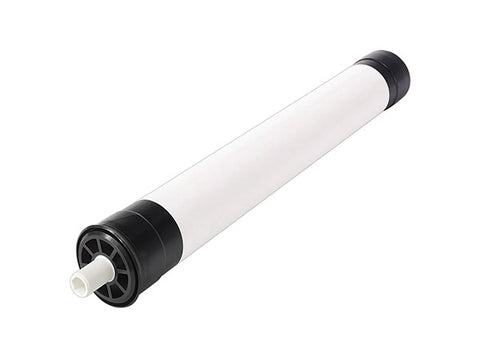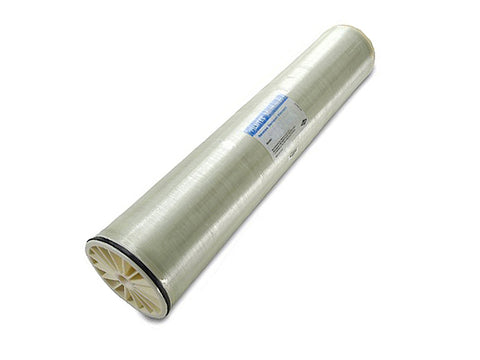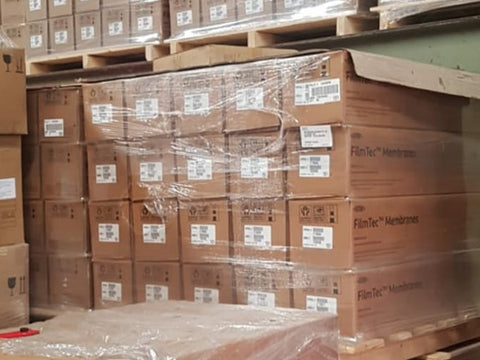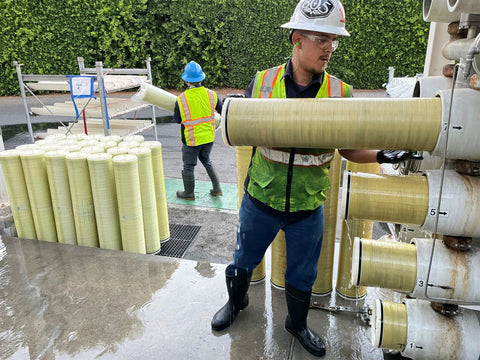Wet vs Dry Reverse Osmosis Membrane: Which is Best for You?
Reverse osmosis (RO) membranes are an effective water purification technology, widely used to produce clean water that meets high quality standards. In Indonesia, the need for a reliable water purification system is critical, given the wide variation in the quality of water sources. When it comes to RO membrane selection, there are two main types you need to know: wet RO membranes and dry RO membranes. This article will discuss the main differences, advantages, and disadvantages of both types of membranes, so that you can make the best choice for your needs.

What is a Wet RO Membrane?
Wet RO membranes are a type of membrane that is already hydrated from production and must be stored in a preservative solution to maintain its activity. The main advantage of wet membranes is that they are ready-to-use; that is, they can be used immediately without any pre-treatment. This makes the installation and replacement process faster and more efficient. Wet membranes are usually recommended for systems that require immediate use and minimal downtime, providing convenience for users who need a quick solution in water purification.
Wet membranes offer significant advantages in terms of readiness and ease of use. Already hydrated, these membranes eliminate the need for what can be a time-consuming hydration process, allowing use immediately after installation. This is particularly valuable in industrial or commercial applications where time is a critical factor and minimal downtime is paramount.
In addition, the practicality of wet RO membranes is also evident from the simpler installation process. Because they are ready-to-use, users do not have to worry about the risk of membrane damage due to improper hydration processes, which can occur with dry membrane types. This makes wet membranes a safe and efficient choice for a variety of water purification needs, including in domestic and large-scale use.
However, it is important to remember that the need to be stored in a preservative solution means that wet membranes may require more careful handling and storage to ensure their activity is maintained. Users should ensure that storage conditions are in accordance with the manufacturer's recommendations, to avoid degradation of membrane quality prior to use.
With the ease of use and time efficiency offered, wet RO membranes are becoming an attractive solution for many users. Watermart provides a wide selection of quality wet RO membranes, designed to meet high water purification standards and support your clean water usage needs. We are dedicated to providing reliable and effective water purification solutions, helping to ensure that you can access clean and safe water easily and quickly.

What is Dry RO Membrane?
In contrast, dry RO membranes do not contain water when packaged and stored, offering unique advantages in terms of storage and shelf life. These membranes require an activation process before use, which involves hydrating over a period of time before they can operate effectively. This means that, although their preparation process takes longer compared to wet membranes, dry membranes provide greater flexibility in inventory management and usage planning.
The main advantage of dry membranes lies in their ability to be stored long-term without loss of performance, as they do not require the preservative solution required by wet membranes. This makes them ideal for use as backup stock or in applications where membrane usage may not be immediately required. With superior storage capabilities, dry membranes offer an economical and practical solution for a variety of situations, allowing for bulk purchases and long-term storage without the risk of degradation.
The dry membrane activation process, while requiring additional planning and time, actually provides an increased level of flexibility. Users can activate membranes on an as-needed basis, minimize system downtime by preparing replacement membranes ahead of time or maintain supplies for emergencies without worrying about the shelf life restrictions often faced by wet membranes.
The ability to be stored without the need for preservative solutions makes dry membranes a more environmentally sustainable option, reducing the need for preservative chemicals and easing waste management. This fits with Watermart's commitment to responsible and environmentally friendly business practices, offering products that are not only effective but also have minimal impact on the environment.
Thus, dry RO membranes become an attractive alternative for those looking for an efficient and easy-to-manage water purification solution in the long run. Understanding your specific needs and operational conditions will assist in choosing between wet and dry membranes, ensuring that you select the most suitable option to maximize the effectiveness of your water purification system. Watermart is committed to providing a wide selection of RO membranes, both wet and dry, to support your water purification needs with reliable, high-quality solutions.

Comparison of Advantages and Disadvantages
RO membranes, in both wet and dry versions, play an important role in water purification systems. Each type has its own advantages and disadvantages, which influence the purchase decision based on the user's specific needs and operational conditions. Here is a detailed comparison between the two types of membranes to help you choose the option that best suits your needs.
-
Wet Membrane
-
Advantages of Wet Membrane
-
Ready to Use and Fast Installation Process: Wet membranes are pre-hydrated from the factory, allowing immediate use without the need for additional time for hydration. This is particularly advantageous in situations that require quick replacement to minimize downtime.
-
Ideal for Immediate Use without Meaningful Downtime: With the ability to be used immediately, wet membranes are an effective solution for applications that cannot tolerate long production downtime.
-
-
Disadvantages of Wet Membrane
-
Requires Special Storage in Preservative Solution: To keep the membrane active, special storage is required, which may add to operational and logistical costs.
-
Shorter Shelf Life Compared to Dry Membranes: Reliance on preservative solutions also results in a shorter shelf life, limiting long-term storage flexibility.
-
-
-
Dry Membrane
-
Advantages of Dry Membrane:
-
More Durable in Storage: Requiring no preservative solution, dry membranes can be stored for long periods of time without losing effectiveness, easing inventory management.
-
Economical for Long-Term Stock: With a longer shelf life and no need for preservatives, dry membranes offer cost savings for users who need a sustainable water purification solution.
-
-
Dry Membrane Disadvantages:
-
Requires Activation Process Before Use: Before it can operate, the dry membrane must be hydrated, which requires additional time and planning.
-
Longer Preparation Time Before Operability: The need for a hydration process makes the preparation time for dry membrane use longer compared to wet membranes.
-
-
Understanding the advantages and disadvantages of these two membrane types allows users to make an informed decision based on factors such as operational needs, ease of use, and economic considerations. Watermart is committed to helping you navigate these choices, providing both types of high-quality membranes that can efficiently and effectively support your water purification needs. By considering these factors, you can choose the most suitable solution to maximize the productivity and reliability of your water purification system.

Conclusion
Choosing between wet and dry RO membranes does depend on your specific needs and usage conditions. Each membrane type has its own advantages and disadvantages that suit different usage situations. If you need a system that is quick and ready to use with minimal downtime, wet membranes offer unbeatable practicality and installation speed, allowing you to immediately fulfill your water purification needs without a long wait. This is perfect for emergency situations or when time is a critical factor in your operations.
In contrast, dry membranes offer advantages in terms of storage flexibility and long-term economy. With the ability to be stored without degradation over long periods of time, dry membranes are an ideal choice for those who need a reliable water purification solution without having to worry about rushed purchases or replacements. The ability to purchase and store these membranes in bulk also allows for more efficient cost planning and reduced risk of downtime due to component shortages.
At Watermart, we understand how crucial it is to have reliable and efficient water purification solutions. As a leading distributor of water purification equipment in Indonesia, we are proud to offer a range of RO membranes from trusted brands such as Filmtec, Toray, and CSM. Providing a selection of RO membranes in both wet and dry versions, we are ready to fulfill all your water purification needs.
Your trust in us not only gives you access to high-quality products, but also to unparalleled customer support, ensuring every aspect of your operation gets the right water purification solution. With Watermart, find the optimal solution for your specific water purification needs, and enjoy clean, safe water with improved fluidity and quality of life.
Contact us via WhatsApp and e-mail for more information on your reverse osmosis membrane needs.

.png?width=50&height=50&name=Logo_Watermart_Perkasa-removebg-preview%20(1).png)


